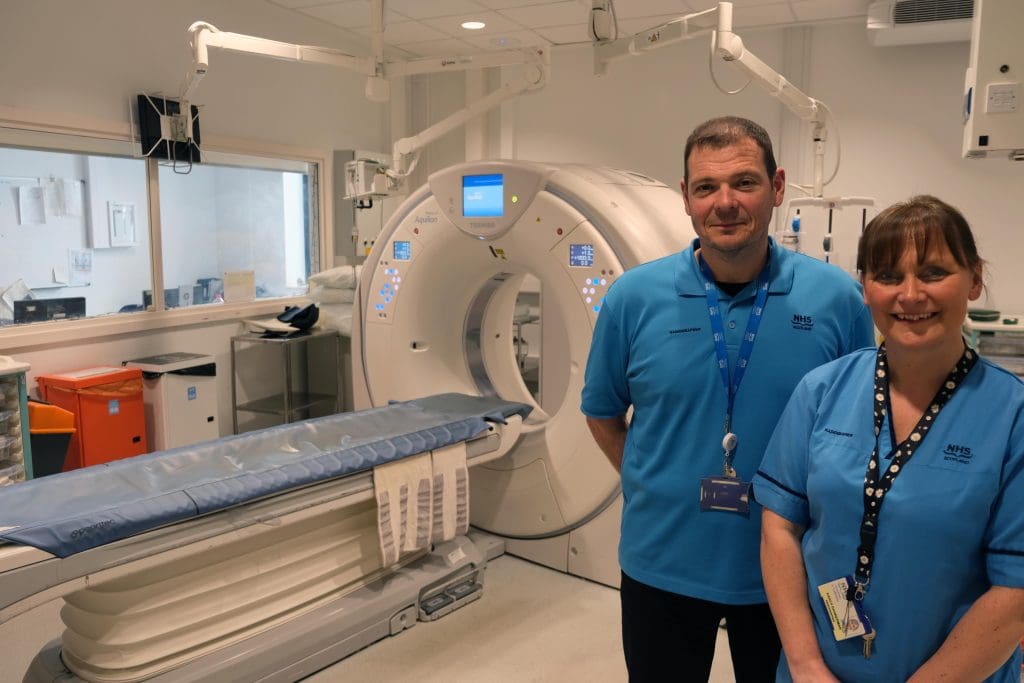A SECOND CT scanner is to be introduced at Dumfries and Galloway Royal Infirmary – helping to ensure faster testing and shorter waiting lists.
The arrival of a second scanner this July is being described as a major boost for diagnostic treatment in the region, and comes at minimal cost to NHS Dumfries and Galloway thanks to a very generous donation by the manufacturers.
Hailing plans for the new scanner and additional radiology staff, NHS Dumfries and Galloway Interim Chair Marsali Caig said: “The introduction of a second CT scanner at DGRI is hugely welcome.
“At a time when we continue to face very significant pressures on our acute and diagnostic systems, this second scanner will be immediately put to very good use.
“It’s an extremely welcome development which will mean that we’re able to ramp up the amount of scans which are taking place, reducing our waiting lists.”
CT scanners are complex instruments which take a series of x-rays to produce a 3D model of the body.
The new scanner had been used for demonstrations by manufacturer Canon, who have very generously offered to provide it to NHS Dumfries and Galloway at no cost.
Ms Caig said: “The NHS Board is extremely grateful to Canon for this very kind offer. Our current financial challenges are very well known, and it would have been very difficult to have secured a second scanner for DGRI without this generous donation.”
Although the scanner is coming at no cost, an expenditure of £385,000 is required to install the scanner – but with £200,000 being met by a grant from the Scottish Government.
The scanner will be installed in an area of DGRI which was deliberately left vacant when the hospital was designed. It will be installed over the next three months and will be operating by July 2025.
A temporary, mobile scanner has been employed recently at DGRI. The new permanent scanner will join the scanner already inside DGRI, while there is another existing CT scanner at Galloway Community Hospital in Stranraer.
Clinical nurse manager Anne Bain said: “With the additional new scanner, we will be able to provide planned outpatient CT appointments while continuing to provide access to emergency scanning for those who require urgent care.
“This should mean shorter waits for scans and fewer delays and postponed appointments.”

